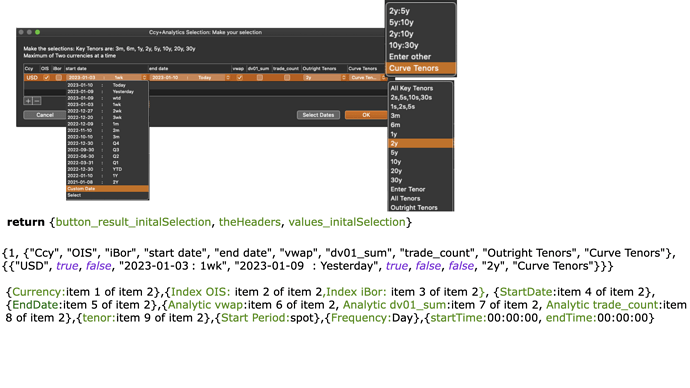Hi both.
If you’re feeling speedfreakish, the recursive method mentioned in the other MacScripter topic mentioned in the one to which peavine linked appears to be about ten times as fast as the iterative one — in extreme cases, anyway. 
on flatten(listOfLists)
script o
property fl : {}
on flttn(l)
script p
property lol : l
end script
repeat with i from 1 to (count p's lol)
set v to item i of p's lol
if (v's class is list) then
flttn(v)
else
set end of my fl to v
end if
end repeat
end flttn
end script
tell o
flttn(listOfLists)
return its fl
end tell
end flatten
set deeplyNestedList to {1, {2, {3, {4, {5, {6, {7, {8, {9, {10, {11, {12, {13, {14, {15, {16, {17, {18, {19, {20, {21, {22, {23, {24, {25, {26, {27, {28, {29, {30, {31, {32, {33, {34, {35, {36, {37, {38, {39, {40, {41, {42, {43, {44, {45, {46, {47, {48, {49, {50, {51, {52, {53, {54, {55, {56, {57, {58, {59, {60, {61, {62, {63, {64, {65, {66, {67, {68, {69, {70, {71, {72, {73, {74, {75, {76, {77, {78, {79, {80, {81, {82, {83, {84, {85, {86, {87, {88, {89, {90, {91, {92, {93, {94, {95, {96, {97, {98, {99, {100, {101, {102, {103, {104, {105, {106, {107, {108, {109, {110, {111, {112, {113, {114, {115, {116, {117, {118, {119, {120, {121, {122, {123, {124, {125, {126, {127, {128, {129, {130, {131, {132, {133, {134, {135, {136, {137, {138, {139, {140, {141, {142, {143, {144, {145, {146, {147, {148, {149, {150, {151, {152, {153, {154, {155, {156, {157, {158, {159, {160, {161, {162, {163, {164, {165, {166, {167, {168, {169, {170, {171, {172, {173, {174, {175, {176, {177, {178, {179, {180, {181, {182, {183, {184, {185, {186, {187, {188, {189, {190, {191, {192, {193, {194, {195, {196, {197, {198, {199, {200, {201, {202, {203, {204, {205, {206, {207, {208, {209, {210, {211, {212, {213, {214, {215, {216, {217, {218, {219, {220, {221, {222, {223, {224, {225, {226, {227, {228, {229, {230, {231, {232, {233, {234, {235, {236, {237, {238, {239, {240, {241, {242, {243, {244, {245, {246, {247, {248, {249, {250, {251, {252, {253, {254, {255, {256}, 257}}, 258}}, 259}}, 260}}, 261}}, 262}}, 263}}, 264}}, 265}}, 266}}, 267}}, 268}}, 269}}, 270}}, 271}}, 272}}, 273}}, 274}}, 275}}, 276}}, 277}}, 278}}, 279}}, 280}}, 281}}, 282}}, 283}}, 284}}, 285}}, 286}}, 287}}, 288}}, 289}}, 290}}, 291}}, 292}}, 293}}, 294}}, 295}}, 296}}, 297}}, 298}}, 299}}, 300}}, 301}}, 302}}, 303}}, 304}}, 305}}, 306}}, 307}}, 308}}, 309}}, 310}}, 311}}, 312}}, 313}}, 314}}, 315}}, 316}}, 317}}, 318}}, 319}}, 320}}, 321}}, 322}}, 323}}, 324}}, 325}}, 326}}, 327}}, 328}}, 329}}, 330}}, 331}}, 332}}, 333}}, 334}}, 335}}, 336}}, 337}}, 338}}, 339}}, 340}}, 341}}, 342}}, 343}}, 344}}, 345}}, 346}}, 347}}, 348}}, 349}}, 350}}, 351}}, 352}}, 353}}, 354}}, 355}}, 356}}, 357}}, 358}}, 359}}, 360}}, 361}}, 362}}, 363}}, 364}}, 365}}, 366}}, 367}}, 368}}, 369}}, 370}}, 371}}, 372}}, 373}}, 374}}, 375}}, 376}}, 377}}, 378}}, 379}}, 380}}, 381}}, 382}}, 383}}, 384}
flatten(deeplyNestedList)
